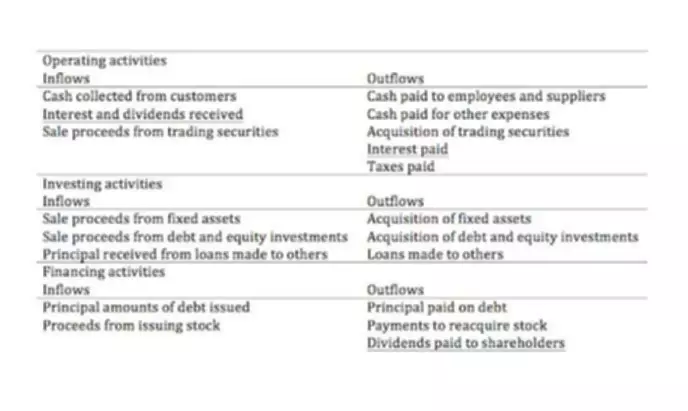Content

Refinery forecasts should be able to handle the conversion of dollar crude costs into local currency. In addition, lenders will expect operating cost assumptions to be confirmed by the technical consultant. Since the U.S. dollar has strengthened, the amount of U.S. dollars required to pay off the debt has decreased by $61,600.
What is foreign currency valuation in SAP?
The program Foreign Currency Valuation (New) comprises the following functions: Valuation of foreign currency balance sheet accounts. Valuation of open items in foreign currencies. Saving the exchange rate differences determined from the valuation per document.
Therefore, the functional currency of Rotor would be Copter’s functional currency, the Australian dollar . KPMG webcasts and in-person events cover the latest financial reporting standards, resources foreign currency translation and actions needed for implementation. In-depth analysis, examples and insights to give you an advantage in understanding the requirements and implications of financial reporting issues.
How Are the Profit & Losses on Currency Transactions Taxed?
However, the equity section items are translated using the historical rates, and items of Income statements are translated using the actual exchange rates, i.e., rates prevailing on dates of actual recognition of revenues and expenses. The Canadian subsidiary’s functional currency is the CAN dollar, but since the reporting currency is the US dollar, you will need to convert the Canadian financial statements into the US dollar as of the end of the reporting period. This is referred to as the translation adjustment and is reported in the statement of other comprehensive income with the cumulative effect reported in equity, as other comprehensive income. Using this method of translation, most items of the financial statements are translated at the current exchange rate. The assets and liabilities of the business are translated at the current exchange rate. Since exchange rates are constantly fluctuating, it can cause difficulty while accounting for https://www.bookstime.com/s. Instead of simply using the current exchange rate, businesses may look at different rates either for a specific period or specific date.

As this worksheet is created, the equations will produce the amounts shown in Exhibit 4. The worksheet includes lines used later, as shown in Exhibit 5, to demonstrate how a parent company can hedge translation risk by taking out a loan denominated in the functional currency of the subsidiary. Hypothetical amounts for the two trial balances and the currency exchange rates are shown in green. The article is designed to help the reader create the worksheet shown in Exhibit 3, and then use it to see firsthand how FX fluctuations affect both the balance sheet and income statement, and how currency translation adjustments may be hedged. Gains and losses resulting from currency conversions are recorded in financial statements. The change in foreign currency translation is a component ofaccumulated other comprehensive income, presented in a company’s consolidated statements of shareholders’ equity and carried over to the consolidated balance sheet under shareholders’ equity. The accounting standards’ methodologies employ the functional currency translation approach, which relies on the current rate method when the functional currency is the same as the local currency – for example, a London subsidiary using the British pound.
Tax effects of exchange differences
You must define translation adjustment schemes to link rate types to ledger accounts. FASB 52 is a guideline for foreign currency translation issued by the Financial Accounting Standards Board . Proportion of cash flows – Whether cash flows from the activities of the foreign operation directly affect the cash flows of the reporting entity and are readily available for remittance to it. A foreign currency transaction gain arises when an entity has a foreign currency receivable and the foreign currency strengthens or it has a foreign currency payable and the foreign currency weakens. A foreign currency transaction loss arises when an entity has a foreign currency receivable and the foreign currency weakens or it has a foreign currency payable and the foreign currency strengthens.
Contracts, transactions, or balances that are, in fact, effective hedges of foreign exchange risk will be accounted for as hedges without regard to their form. The key difference is that a foreign currency transaction is when the company transacts with an unaffiliated 3rd party. Foreign currency remeasurement/translation occurs internally between the parent and subsidiaries. A translation effect resulting from translating the entity’s interest in the equity of the hyperinflationary foreign operation at a closing rate that differs from the previous closing rate. The Committee concluded that the principles and requirements in IAS 21 provide an adequate basis for an entity to determine how to present the cumulative pre-hyperinflation exchange differences once a foreign operation becomes hyperinflationary.
Different Balance Sheet Date
If there are intra-entity profits to be eliminated as part of the consolidation, apply the exchange rate in effect on the dates when the underlying transactions took place. Proportion of transactions – Whether the foreign operation’s transactions with the reporting entity constitute a high or low proportion of the operation’s activities. For additional exchange rates not listed below, refer to the governmental and external resources listed on theForeign Currency and Currency Exchange Ratespage or any other posted exchange rate . A subsidiary would likely transact in multiple different currencies with 3rd party customers. However, the subsidiary needs to report in one currency, so it would remeasure its financials to present them in the functional…
- The resulting translated amounts for non-monetary items are treated as their historical cost.
- If there are translation adjustments resulting from the implementation of these rules, record the adjustments in the shareholders’ equity section of the parent company’s consolidated balance sheet.
- Foreign currency translation gains or losses are recorded in other comprehensive income (a separate component of stockholder’s equity), while remeasurement or transaction gains or losses are recorded in current net income.
- For practical reasons, an average exchange rate is often used to translate income items.
- Ensuring you have them properly reported on your consolidated financial statements is an important step — which means understanding what each represents, how each is calculated and which statement each impacts.
- Or at the time of sale of the investment in a foreign company, the translation adjustment amount in the equity section is eliminated from there and considered as part of an income statement.
Exporters that receive payment in foreign currency and allow the purchaser time to pay must carry a foreign currency receivable on their books. Conversely, importers that agree to pay in foreign currency will have a foreign currency account payable. To be able to include them in the total amount of accounts receivable reported on the balance sheet, these foreign currency denominated accounts receivable must be translated into the currency in which the exporter keeps its books and presents financial statements.
Foreign Currency Translation Process
The equity and the statement of other comprehensive income have been impacted as a result of the conversion of the statements from CAN dollar to US dollar. We can now see that foreign currency volatility can impact both net income and equity of an entity. Foreign currency translation gains or losses are recorded in other comprehensive income (a separate component of stockholder’s equity), while remeasurement or transaction gains or losses are recorded in current net income. Once an entity has completed the remeasurement process, translation of the financial statements into the reporting currency is required if the functional currency is different from the reporting currency. In other words, translation is necessary for the purposes of preparing consolidated financial statements when an entity’s functional currency is different from its parent. Translates the results and financial position of the hyperinflationary foreign operation into its presentation currency in preparing its consolidated financial statements.
- Daniel is an expert in corporate finance and equity investing as well as podcast and video production.
- In addition, lenders will expect operating cost assumptions to be confirmed by the technical consultant.
- Advanced and international accounting textbooks contain more detailed examples.
- Financial statement trends for companies with foreign subsidiaries can’t always be taken at face value.
- The amount realized by this is used to pay off the creditors and all other liabilities of the business in a specific order.
- Resulting gains or losses are recognised in the Financing and Investment Income and Expenditure line in the Comprehensive Income and Expenditure Statement.
Hence, despite the issue’s widespread applicability, the Interpretations Committee decided not to take the first issue onto its agenda. Keeping accounting records in multiple currencies has made it more difficult to understand and interpret the financial statements. For example, an increase in property, plant and equipment (PP&E) may mean that the company invested in more PP&E or it may mean that the company has a foreign subsidiary whose functional currency strengthened against the reporting currency. This may not seem like a significant issue, but goodwill arising from the acquisition of a foreign subsidiary may be a multibillion-dollar asset that will be translated at the end-of-period FX rate. The gains and losses arising from this are compiled as an entry in the comprehensive income statement of a translated balance sheet.
Recognize a gain or loss from this increase or decrease of U.S. dollar cash flows in the foreign currency transaction during the period in which the exchange rate changed. When an entity’s financial statements include foreign operations, it must consolidate those foreign entities and present them as if they were one. This edition of On the Radar offers guidance for translating the accounts of foreign entities as advised under ASC 830, otherwise known as the “functional currency approach.” The guidance does not specify the exchange rate to be used to translate a foreign entity’s capital accounts.
Each financial instrument has a FATCA status and reports identities of such persons and assets to the US Department of the Treasury. The hedging reserve comprises the effective portion of the cumulative net change in fair value of cash flow hedging instruments related to hedge transactions that are extant at the year end.
The economic effects of an exchange rate change on a foreign operation that is an extension of the parent’s domestic operations relate to individual assets and liabilities and impact the parent’s cash flows directly. Accordingly, the exchange gains and losses in such an operation are included in net income. The financial statements of many companies now contain this balance sheet plug.









